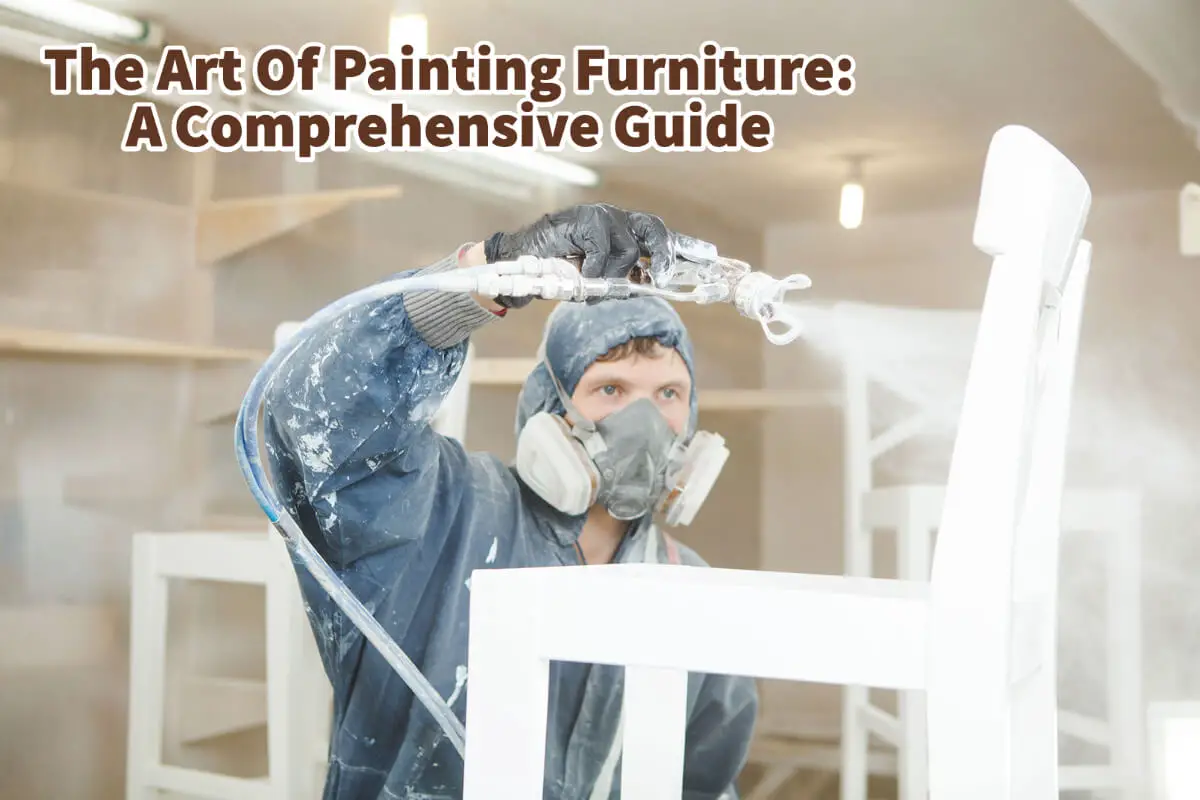At Mondoro, we are prolific furniture manufacturers, and a pivotal component of our craftsmanship lies in the final touches – the finishing of the furniture.
Painting furniture transcends mere application; it is an art form. We have honed this art through two distinct methodologies: spray gun application and meticulous hand finishing. Each technique possesses its distinct merits, with the choice resting on the envisioned finish and the furniture’s specific design.
Table of Contents
- Mastering Furniture Painting: An In-depth Overview
- Preparation: The First Step To A Flawless Finish
- Safety First: Ventilation Is Key
- Drying And Layering: Patience Is A Virtue
- Related Content
Mastering Furniture Painting: An In-depth Overview
At Mondoro, we recognize that the essence of a beautiful piece of furniture is not just in its design or structure but also in the finesse of its finish. Painting furniture is an art, and it’s an art we’ve mastered through two primary techniques: using a spray gun and hand finishing. Both methods have unique advantages, and the choice between them depends on the desired finish and the type of furniture piece.
Why Choose Spray Painting Furniture
Using a spray gun is one of the most efficient ways to achieve a smooth, consistent finish on furniture. This method distributes paint evenly over the surface, eliminating brush strokes and potential unevenness. It’s ideal for larger pieces or intricate designs, where a brush might not reach every nook and cranny.
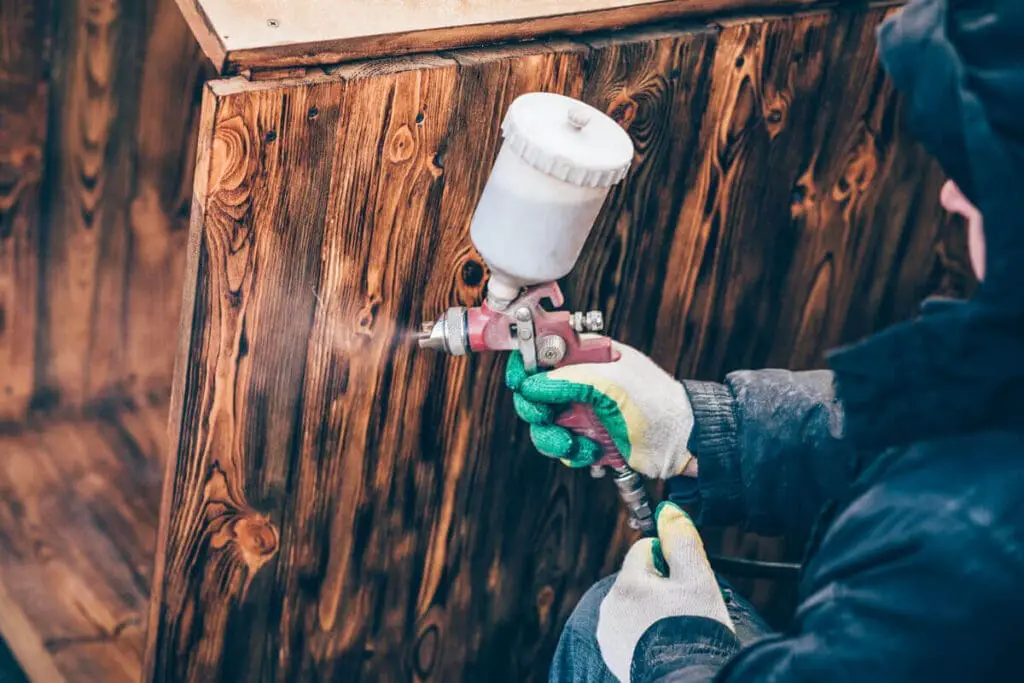
10 Reasons Why To Spray Paint Furniture
Spray painting furniture for most finishes is part of all kinds of furniture finishes. Most furniture finishes in commercial factories will use some spray finish to achieve the look they want.
Here are ten compelling reasons to choose spray paint for furniture:
Even Finish:
Spray painting ensures a consistent and smooth finish, free from brush strokes and potential splotches.
Speed:
The process is faster than traditional hand painting, especially for larger pieces or batches of furniture.
Precision:
Spray guns can reach nooks, crannies, and intricate designs that might be challenging for brushes.
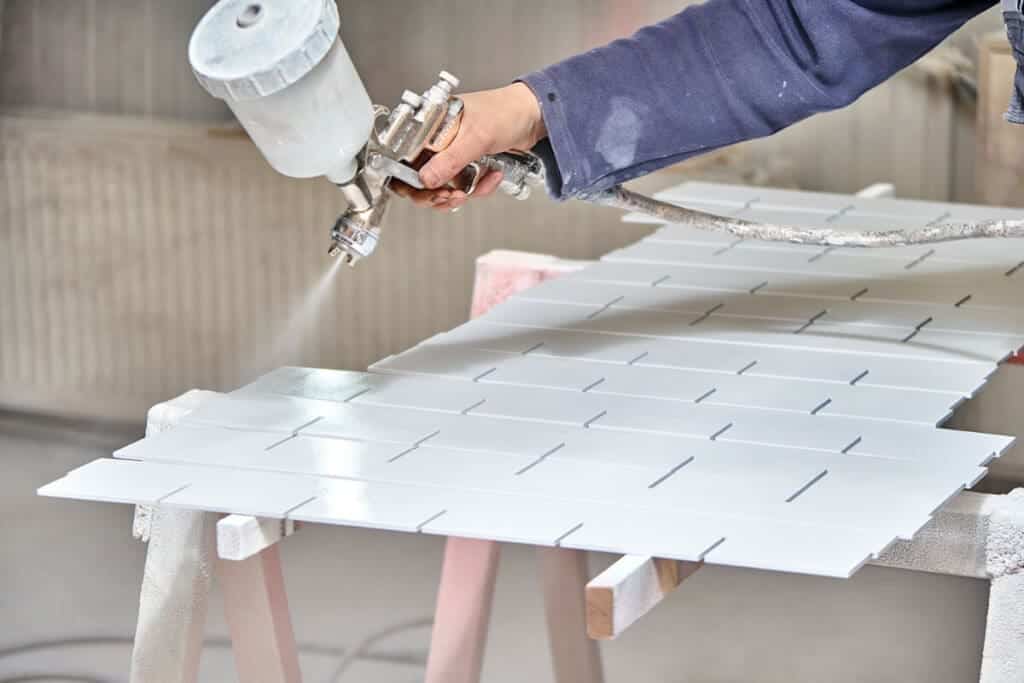
Customizable Texture:
Depending on the nozzle and technique, spray guns can produce a variety of textures – from ultra-smooth to a more textured finish.
Reduced Waste:
With the proper technique, spray painting can be more efficient, using less paint than traditional methods.
Versatility:
Spray paints come in various colors, finishes, and formulations suitable for different furniture materials.
Durability:
Spray paint often provides a more durable finish, resisting chipping and wear over time.
Seamless Blending:
For repairs or touch-ups, spray painting allows for seamless blending with existing colors and finishes.
Professional Look:
Spray painting often yields a professional-grade appearance, often seen in store-bought furniture.
Economical:
Over time, especially for those refurbishing or producing furniture in bulk, the investment in spray painting equipment can prove more economical due to the speed and reduced waste.
Remember, while spray painting has numerous benefits, it is essential to use it in a well-ventilated area and with the proper safety precautions.
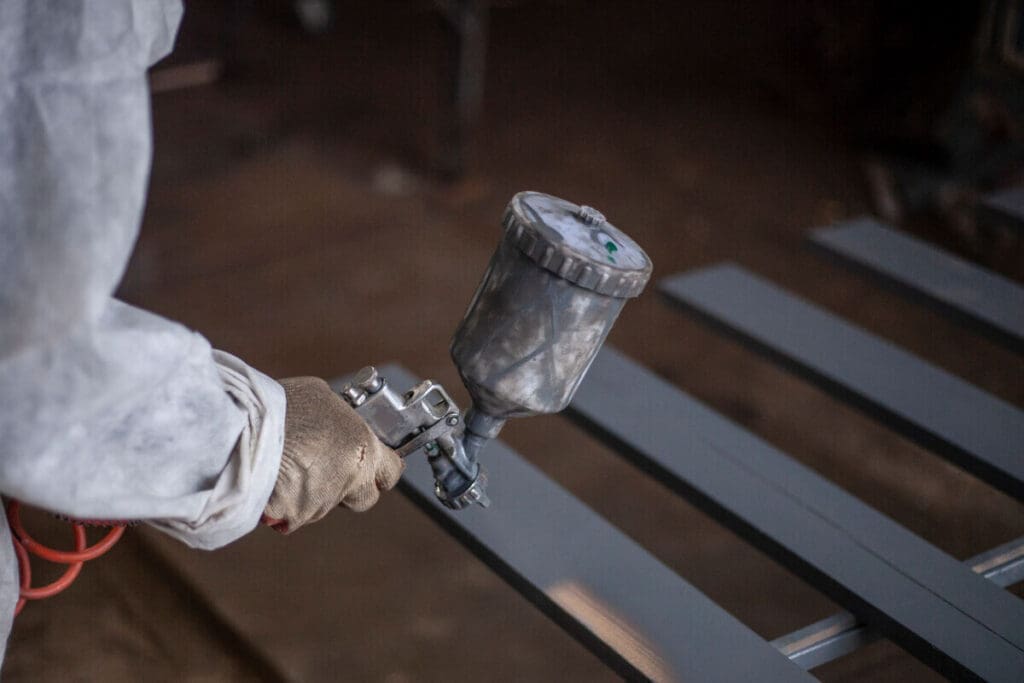
The Charm Of Hand Finishing
While spray painting offers a seamless finish, hand finishing is for those who appreciate the authenticity and craftsmanship of manual work. It allows for more control over the paint’s texture and can impart a more personalized touch to the piece.
This method is favored for antique or vintage furniture restorations, where a hand-painted touch can enhance the item’s character.
At Mondoro, many of our creations incorporate hand-painted or hand-finished details. This is because manual finishes impart a depth and aesthetic to a piece that can’t be achieved through other means. Such intricate finishes also add to the complexity and uniqueness of the final product.
Preparation: The First Step To A Flawless Finish
Regardless of your chosen method, the outcome’s success heavily relies on the preparatory steps.
Surface Preparation
The importance of this step cannot be stressed enough. Before applying any paint, the furniture must be thoroughly cleaned and prepped.
Cleaning
Dirt, oil, and old finishes can prevent paint from adhering correctly. A good wipe-down with a mild detergent or a specialized furniture cleaner is necessary. After cleaning, light sanding ensures a smoother surface and better paint adhesion.
Priming
A primer is essential for furniture made of materials that might bleed through, like certain types of wood or previously stained items. This step creates a barrier, preventing underlying materials or colors from showing through the fresh paint.
Safety First: Ventilation Is Key
When spray painting, the environment plays a crucial role. The paint particles dispersed in the air can be harmful if inhaled. At Mondoro, we ensure that our spray painting happens in a well-ventilated area.
This might mean having large fans or even a specialized water system to filter out the paint particles from the air. This ensures our artisans’ safety and the paint job’s quality, as dust or other particles are minimized.
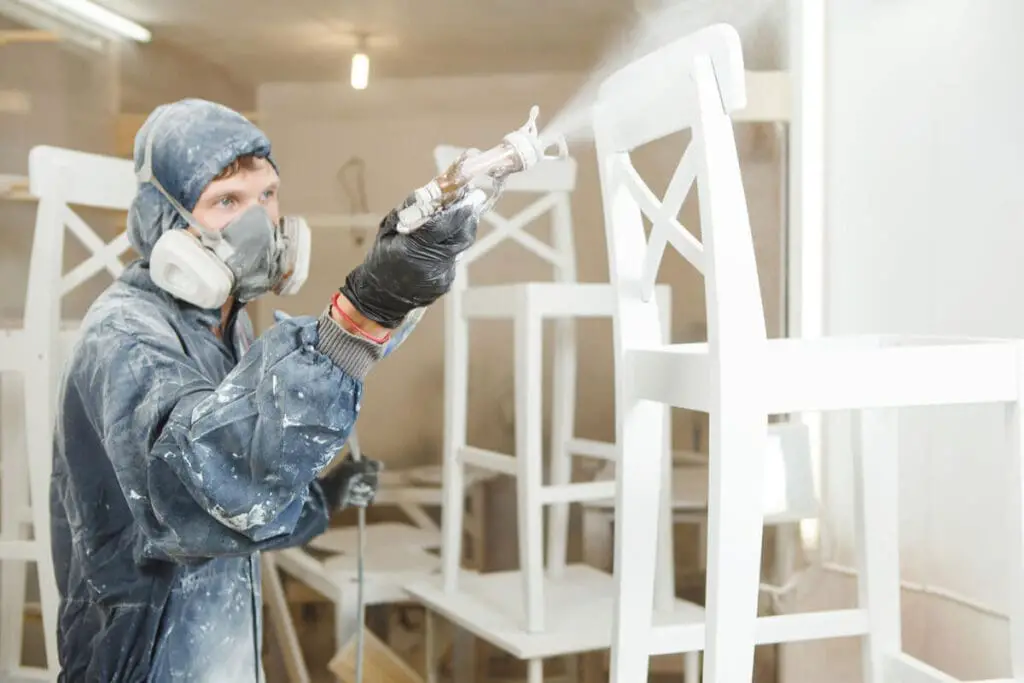
Drying And Layering: Patience Is A Virtue
Once a coat of paint is applied, it’s essential to allow it to dry thoroughly. Depending on the type of paint and environmental conditions, this can take anywhere from a few hours to a day.
At Mondoro, we have designated areas where furniture pieces are laid out or hung up to dry, ensuring they remain dust-free and untouched.
A single coat of paint will rarely do the job. Most pieces require several layers to achieve the desired opacity and finish. But remember, before applying a subsequent coat, it’s crucial that the previous one is thoroughly dried and the surface is lightly sanded to ensure perfect adherence.
Painting furniture is meticulous, where attention to detail and patience pays off. Whether spray painting for that perfect, even finish or hand finishing to bring out a piece’s character, the steps remain rooted in preparation, safety, and patience.
At Mondoro, we pride ourselves on our commitment to these principles, ensuring that every piece of furniture is not just a functional item but a work of art. Whether you’re an enthusiast looking to refinish a beloved piece or professional seeking tips, always remember that the beauty of a painted furniture piece is as much in the process as it is in the finished product.
If you are interested in seeing how Mondoro can be a valuable partner for you for home decor products – we would love to talk to you to see how we can help you.
Find out more about how Mondoro can help you create, develop, and manufacture excellent home decor and home furniture products – including lacquer home decor and furniture. Don’t hesitate to contact me, Anita. Check out my email by clicking here or become a part of our community and join our newsletter by clicking here.
Mondoro gives out a FREE Lookbook to anyone interested. You can receive a copy of our latest Lookbook by clicking here.
Listen to our Podcast called Global Trade Gal. You can find it on all major podcast platforms. Try out listening to one of our podcasts by clicking here.
Subscribe to our Mondoro Company Limited YouTube Channel filled with great videos and information by clicking here.
Related Content
Lacquerware And Mother Of Pearl – 10 Reasons We Love Them!
We love lacquerware and mother-of-pearl products. Lacquerware and mother of pearl are high-quality handmade products that can produce a variety of finishes and techniques in various shapes and sizes. You can use the materials for all kinds of home decor and home furniture products.
You can discover more by reading Lacquerware And Mother Of Pearl – 10 Reasons We Love Them! by clicking here.
The Pros And Cons Of Lacquer Vs. Enamel Finishes
Lacquer and enamel are popular finishes used in various applications, from woodwork and furniture to cars and machinery. While both can provide a glossy finish, they differ in composition, durability, and application.
You can discover more by reading The Pros And Cons Of Lacquer Vs. Enamel Finishes by clicking here.
About Vietnamese Lacquer Furniture And Accessories
Vietnamese lacquer requires many manufacturing steps in the lacquer production process, including making the base, preparing the lacquer base to be applied, and finally, using the lacquer paint on the surface. Every piece must be carefully sanded to give it a very smooth surface. Vietnamese lacquerware production requires a lot of skill and knowledge.
To learn more, you can read About Vietnamese Lacquer Furniture And Accessories by clicking here.

